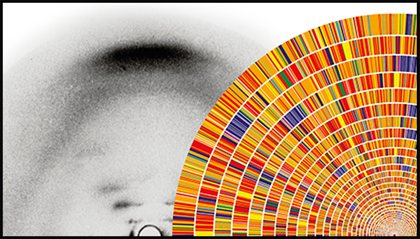Photo51 - from DNA to the brain
Exhibition
June – July 2013
Inigo Rooms, Somerset House East Wing, Strand Campus

Photo51 invited the public into a historically charged moment in the DNA story to witness both its impact on contemporary neuroscience and the future of biomedical research.
From the first glimpse of DNA, the exhibition and an accompanying series of free, public events and science demonstrations explored how DNA now lets science see the structures, processes and beauty of the developing brain.
The discovery of DNA is arguably the most significant breakthrough of modern science. From DNA fingerprinting to personalised genomes, the realisation that we can be ‘read’ through our DNA has made it both a potent and challenging symbol of the power of biomedicine. What is less visible is how DNA has become a powerful laboratory tool, a common currency of bench experiments and the means through which new insights into biology are forged.
On the eve of the redevelopment of the spaces on the Strand in which DNA was first photographed, the photography and installations of Christine Donnier-Valentin and Shelley James, working with archivists and x-ray crystallographers, witnessed the traces of the pioneering science that took place in these disappearing postwar spaces.
Their work was contrasted with spectacular images that explored the ubiquitous application of DNA as a tool in the contemporary laboratory in a collaboration that brought photographer Marcus Lyon together with neuroscientists in the MRC Centre of Developmental Neurobiology.
Photo51 was both a snapshot of the changing face of the Twentieth century’s greatest discovery and a story of scientific renewal and reinvention: an interpretation of the changing fabric of the laboratory and the research it contains and shapes, through the lens of DNA.
Curated by Richard Wingate.
Presented in collaboration with the MRC Centre for Developmental Neurobiology and King's College London School of Biomedical Sciences, with support from the Medical Research Council and Astra-Zeneca. It was supported by the university's Culture team.